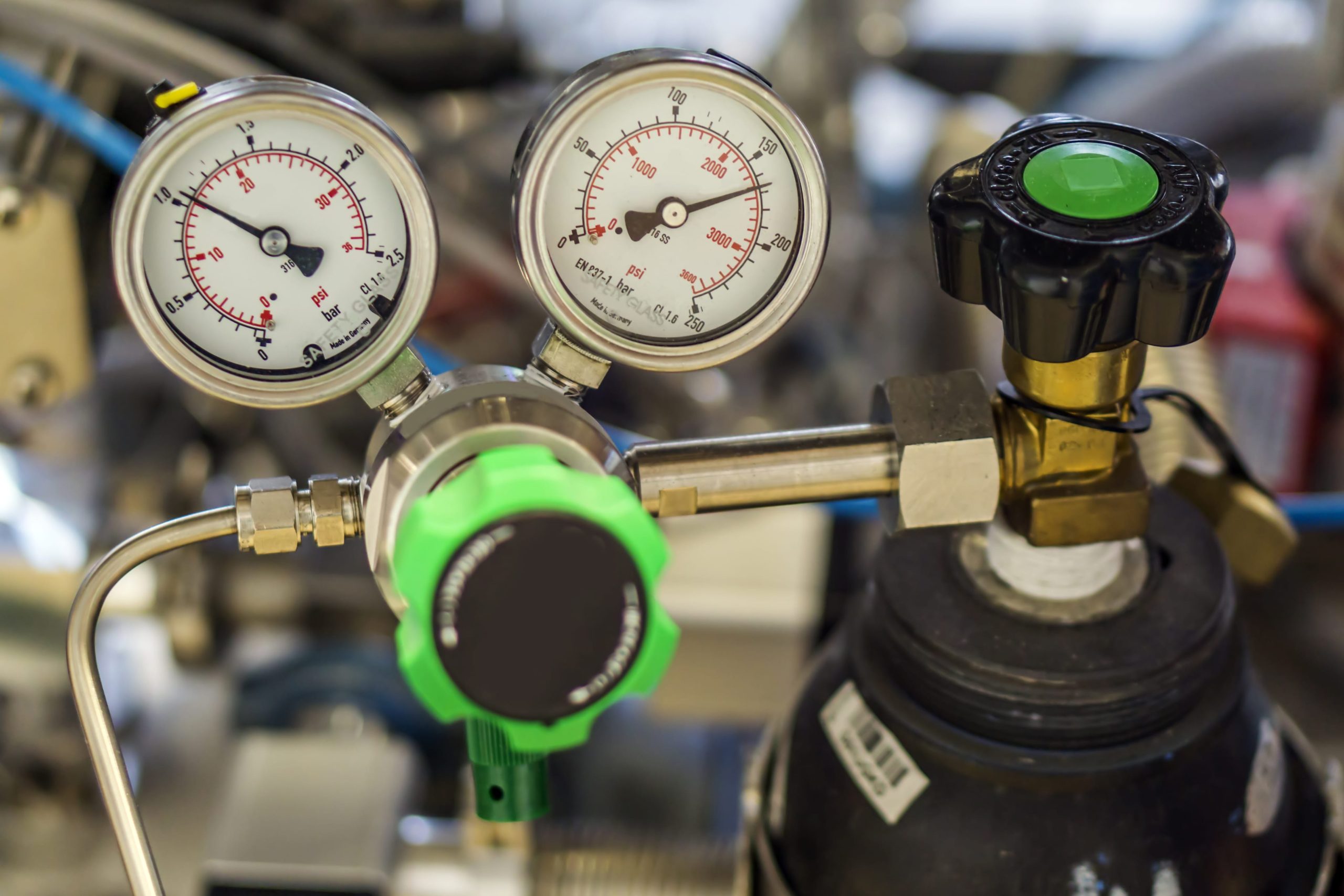

Compressed gas pressure gauges are essential tools for monitoring the pressure of various gas applications. Pressure gauges play a critical role in managing and operating systems that use compressed gases. They provide precise readings on a dial or digitally that guide operational decisions and maintenance protocols.
There are various compressed gas pressure gauges available, each designed for specific applications. Some examples include:
Maintaining accurate pressure readings is critical due to numerous factors:
Regular calibration ensures your pressure gauges provide accurate readings. Calibration involves comparing the gauge against a known standard and adjusting it as necessary to match the standard.
Both digital and analog gauges have their merits. The best choice depends on your application’s precision, data recording and budgetary needs.
Digital gauges can be more expensive to purchase. However, you can expect high accuracy and easy-to-read displays, along with data-logging capabilities for trend analysis.
Analog gauges are affordable and widely available. They provide a quick visual reference for pressure fluctuations, but they can be less accurate than digital gauges.

Selecting the appropriate pressure gauge for your specific needs involves understanding several critical factors that impact its performance and suitability for your application, such as:
The gauge material and design should be compatible with your application’s specific requirements. For example, gauges used in the food and beverage industry might require NSF certification for cleanliness and food safety, whereas those in the oil and gas sector must withstand extreme conditions.
Different industries rely on specific types of pressure gauges based on their unique needs:
Maintaining your pressure gauges is crucial to ensure they provide accurate readings and function reliably over their expected life span. Here are some maintenance tips:
Be vigilant about issues like gauge leakages, needle fluctuations, blockages in the pressure port and zero-point drift, where the gauge does not return to zero when pressure is released. Recalibrating the gauge can often correct this.

Meritus Gas Partners offers a wide range of pressure gauges and related products. Contact us for a free quote, expert advice and product support, or visit one of our partner locations across the U.S.